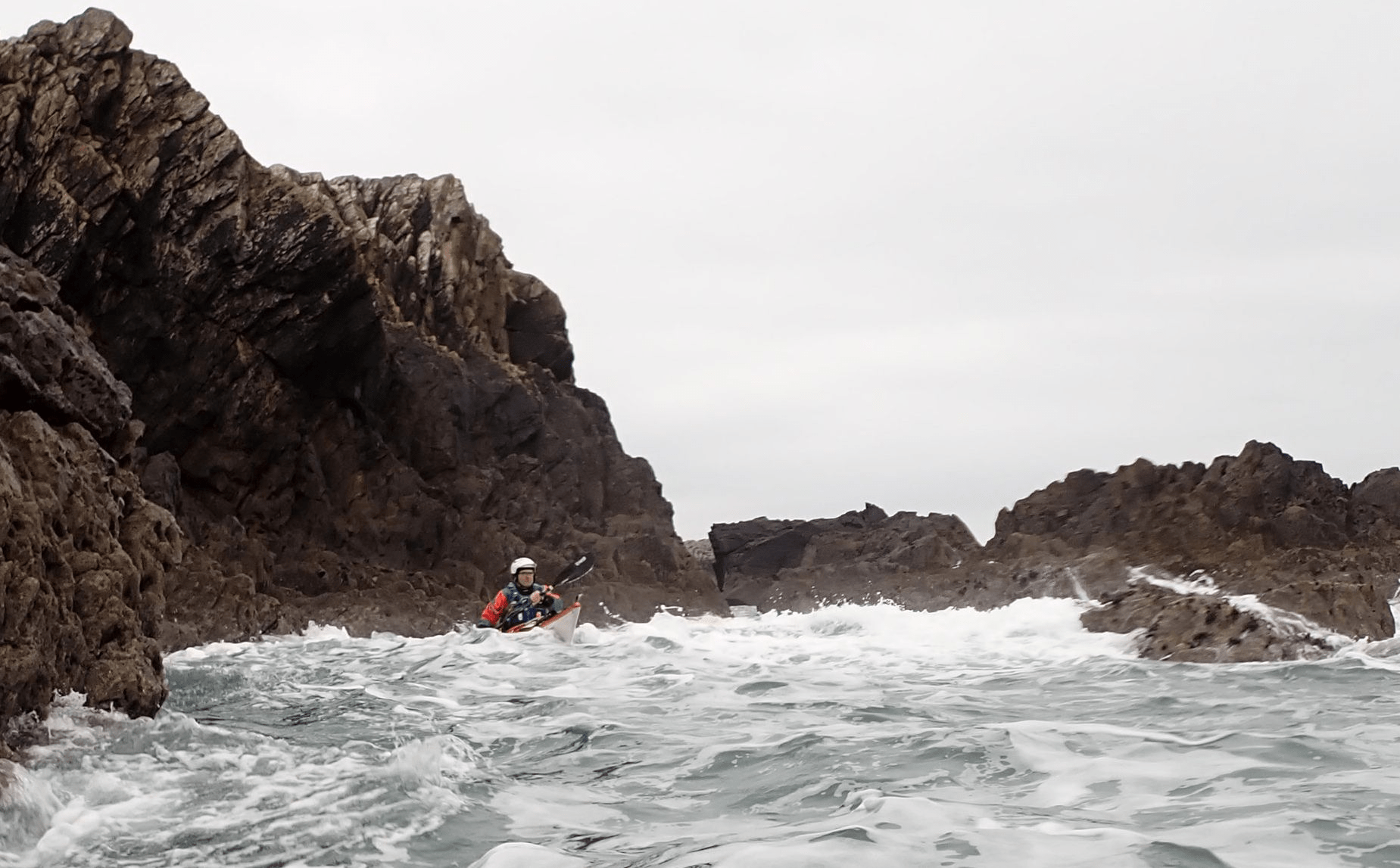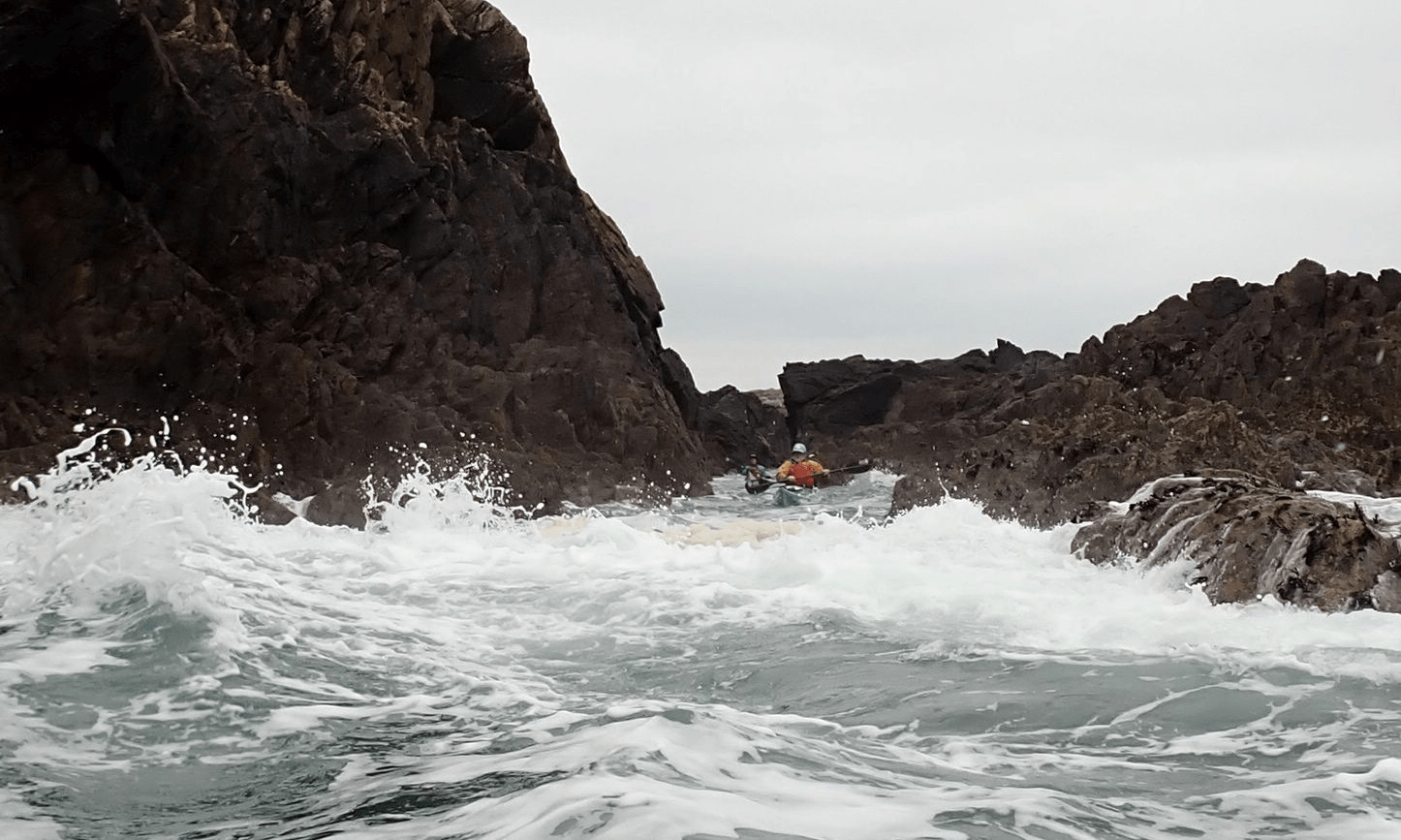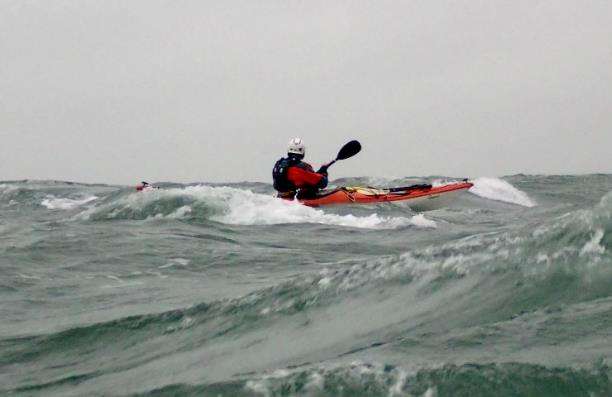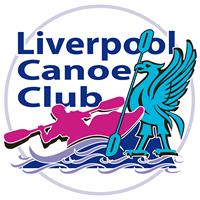Under Instruction: LCC Sea Paddling with Mirco Goldhausen – Day 2 by Chris Bolton
Three of us met Mirco at the Paddlers’ Return for a day’s coaching in ‘dynamic water’. Meeting there, rather than at a launch point, means that the choice of put-in is unconstrained. The previous day’s session had been based around North Stack. Today we had a more experienced group, and more wind from the South, so Mirco was hoping to find somewhere where the tide was running against the wind. That would push the waves closer together and force them to become higher, giving us more challenging conditions. With HW Liverpool at 10am, the tide would be ebbing until early afternoon. North Stack race runs more to the West. South Stack runs South, but it takes time to get there, and there are no eddies, so you only get one shot, making it a poor coaching venue.
Rhoscolyn, on the other hand, has a variety of channels flowing generally South, and plenty of eddies. So we drove to Borthwen, where we were pleased to see the parking ticket machine was covered for the winter. This is an annoying machine, normally requiring £10 in coins or a good phone signal. It was a short carry or trolley to the water, and then Mirco led us along the cliffs towards Rhoscolyn Head. We did some easy rockhopping – Mirco’s approach is to only go for gaps where the water is pushing through, not sideways, and where the gap is paddleable even at the worst point in the swell. This means a plastic boat is not necessary!

On reaching Rhoscolyn Head, we warmed up with a gentle surf on the flow in the channel, then Micro took us to an eddy to discuss the race that was running SW from the top end of the rocks. The waves were fairly smooth and typically about 1.5m peak to trough, with occasional 2m waves breaking at the crest. We ran through for 100m then broke out into the eddy and went round for another go. On the third round I decided it was feasible to spin round and surf back to the front wave, which worked well, and Dave followed me on the next one.

We then nipped into the bay at Porth Gwaich for a debrief and discussion of ways to manage the boat in tide races. By the time we were back at the race, the tide had dropped, in both level and speed of stream – the waves were a bit smaller but, more significantly, the water was dark brown in the centre of the race, signifying seaweed close to the surface, with rock close beneath. So we avoided that and took a different line down the race. We drifted, and found that the wind was taking us North just about as fast as the tide was taking us South, so we sat chatting, without really noticing the turbulence – which is a great way to learn to relax on the water, and in turn makes everything else easier.
It was past lunch time, so we paddled back to Porth Y Corgwl, which was harder than expected. The tide had turned and was flowing North, about an hour earlier than the guidebook predicted (that doesn’t mean the book is wrong, just that the moon hasn’t read it). Over lunch we had some interesting conversations about why HW for springs and neaps is always at the same time of day for any location. So HW Liverpool is around noon and midnight at Springs, and 6am / 6pm at Neaps. This took us into some scientific discussion about how the moon causes the tides and why there’s a tidal bulge on the side of the earth away from the moon, as well as on the side nearest to it.

After lunch, there wasn’t much of a race to play in, and darkness wasn’t far away, so we practised rescues among the rocks. One swimmer, one rescuer and one with towline ready to pull them away from danger. Lots was learned, in my case particularly that an easy place to stow your paddle is to swing it parallel to the boat and drop the forward blade under the middle-front deckline, on the opposite side to where that blade is when paddling, and to wear my towline with the bag at the front, ready to deploy on either side. Another good learning point is that the cockpit rim takes more stress than you might expect and the only effective way to fix a loose rim is to rebuild it.
All in all, a great day’s paddling and learning. Mirco is a calm and thoughtful coach and it was well worth my share of his daily charge.
Chris
(photos by me or Mirco)
